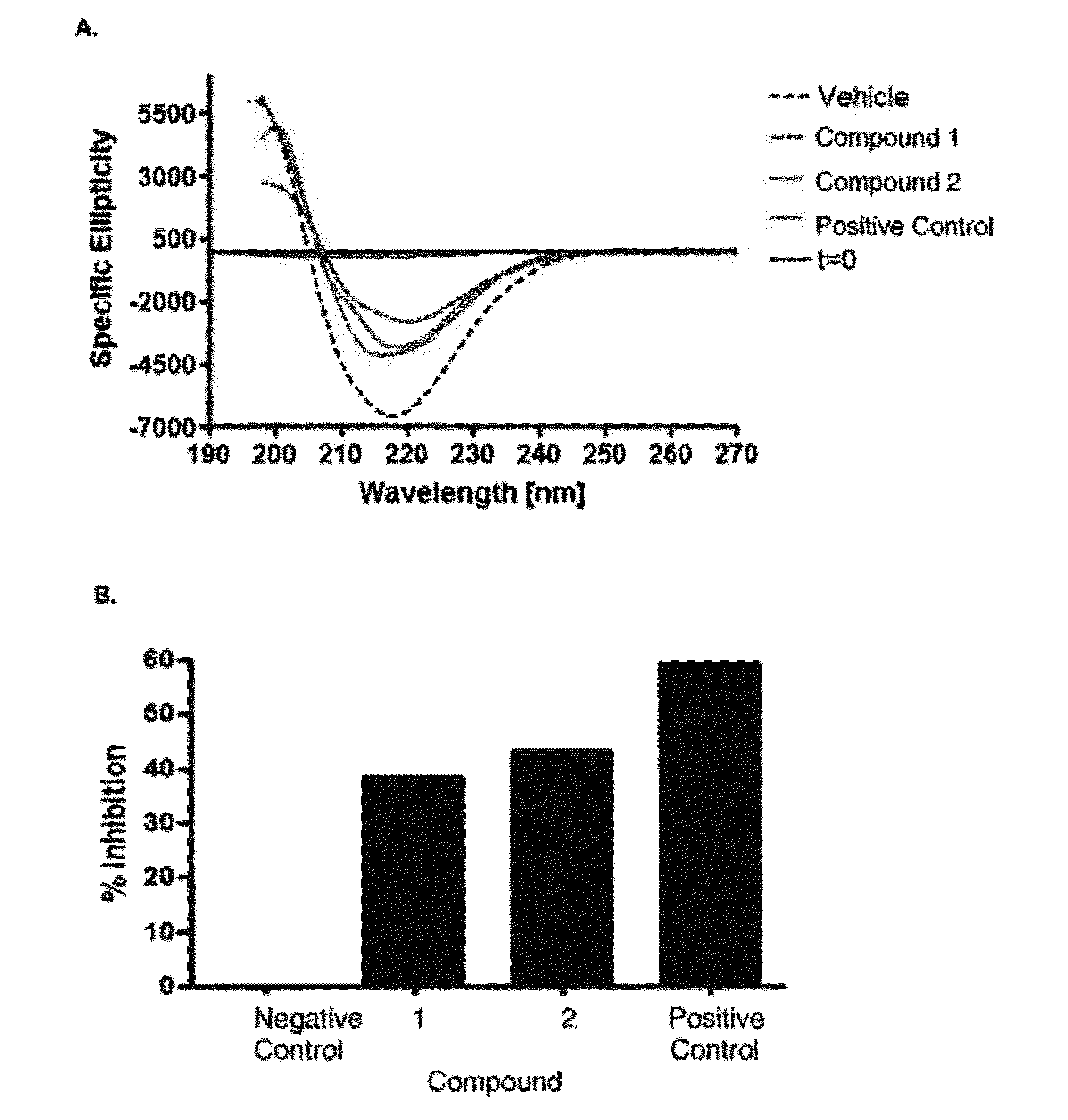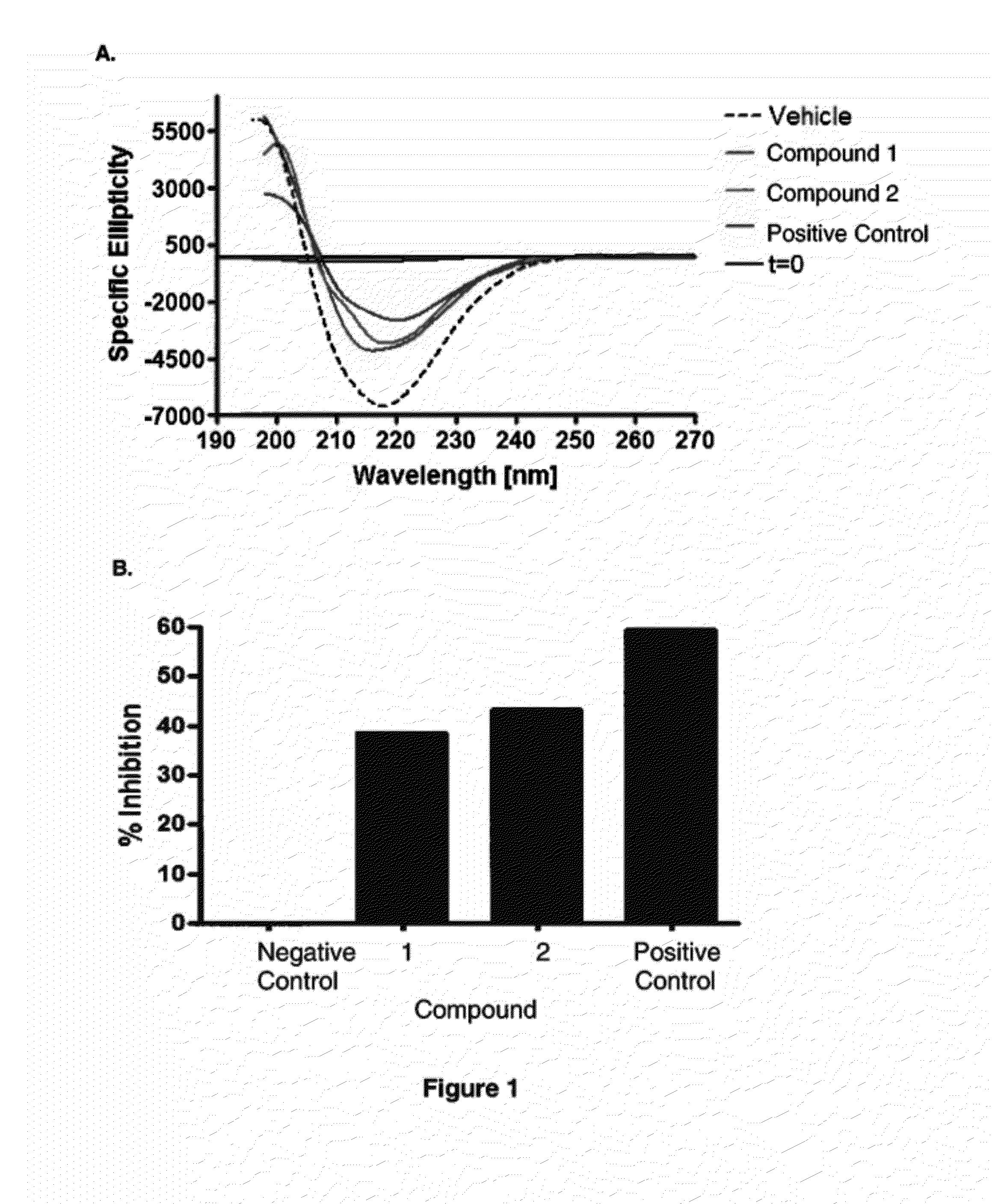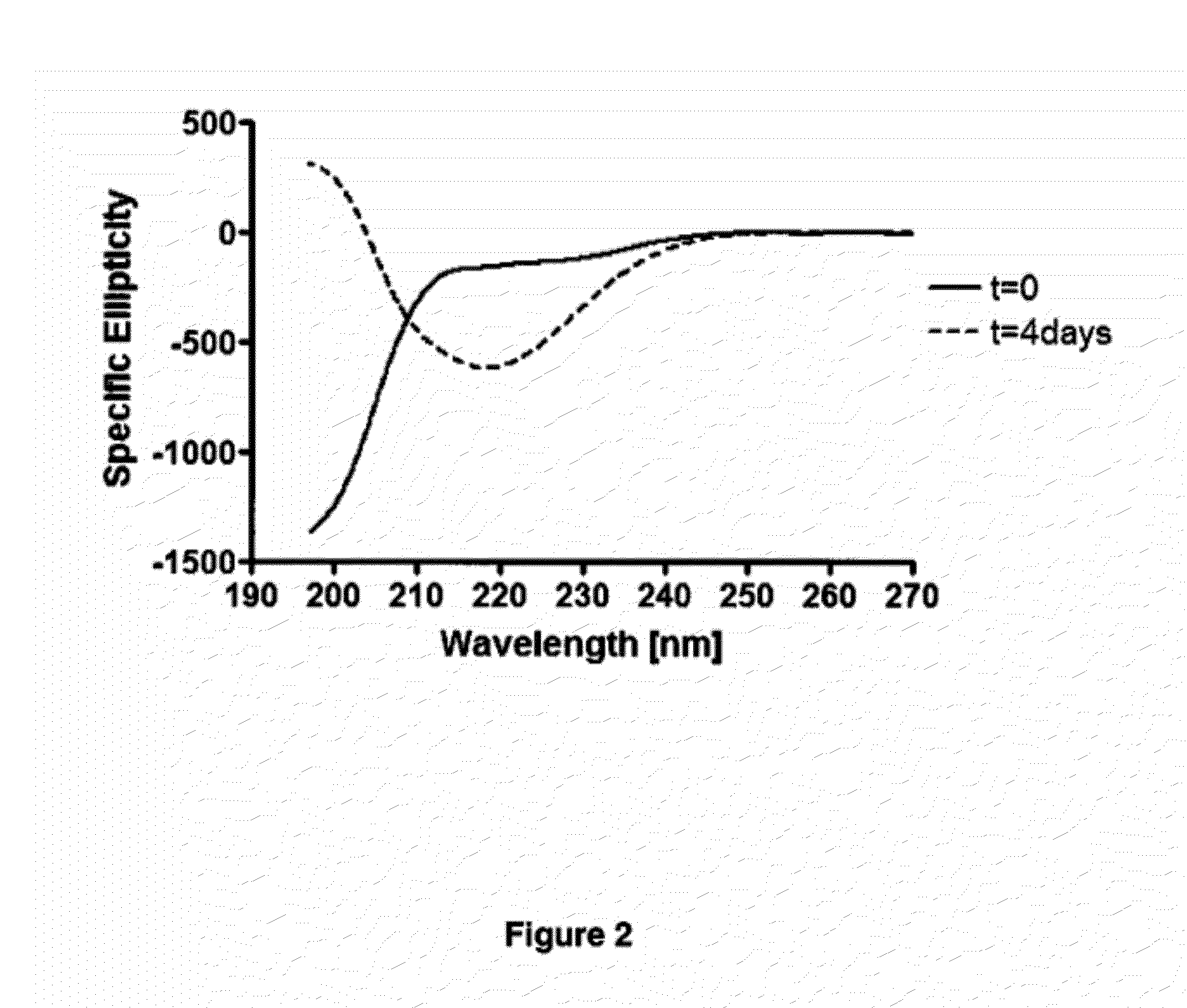Compounds, Compositions, and Methods for the Treatment of Beta-Amyloid Diseases and Synucleinopathies
a technology of beta-amyloid disease and synucleinopathies, applied in the field of bisdihydroxyaryl compounds, can solve the problems of toxic and neuronal cell death, a heavy economic burden on society, and the overall cost of alzheimer's disease to families and to society is staggering
- Summary
- Abstract
- Description
- Claims
- Application Information
AI Technical Summary
Benefits of technology
Problems solved by technology
Method used
Image
Examples
example 1
Synthesis of Sulfonamide 2
[0184]
[0185]Synthesis of the sulfonamide 2 was accomplished by reaction of 3,4-methylenedioxybenzenesulfonyl chloride (prepared from 1,2-methylenedioxybenzene (Tao, E. V. P.; Miller, W. D. U.S. Pat. No. 5,387,681. 1995)) with 3,4-methylenedioxyaniline to give the sulfonamide 1 in good yield. Deprotection with boron tribromide under standard conditions gave the free phenolic sulfonamide in reasonable yield.
[0186]To a stirred solution of 1,3-benzodioxole-5-sulfonyl chloride (Tao, E. V. P.; Miller, W. D. U.S. Pat. No. 5,387,681. 1995) (1 g) in dichloromethane (DCM) (10 ml) was added a solution of 3,4-methylenedioxyaniline (0.62 g) in dichloromethane (10 ml) followed by pyridine (1 ml). The mixture was refluxed for 2 hours, cooled, diluted with dichloromethane (150 ml), washed with aqueous HCl (1M, 2×100 ml), dried, then evaporated in vacuo to give the crude product as a brown gum. Purification by column chromatography over silica gel eluting with 5-10% ethyl a...
example 2
Synthesis of Imidazole 4
[0195]
[0196]The imidazole ring was formed according to the method described by Li et al. (Li et al. Organic Process Research and Development 2002, 6, 682-3) from the amidinobenzene, formed from piperonylonitrile (Thurkauf et al. J Med Chem. 1995, 38 (12), 2251-2255) and the bromoketone (Castedo et al. Tetrahedron 1982, 38 (11), 1569-70) formed from 3,4-methylenedioxyacetophenone according to the method described by Lee et al. (Korean Chem Soc. 2003, 24 (4), 407-408). Deprotection with boron tribromide under standard conditions gave the free phenolic imidazole in good yield.
[0197]According to the process described by Li, a mixture of 3-amidinobenzene (Thurkauf et al. J Med Chem. 1995, 38 (12), 2251-2255) (0.5 g, 3 mmol) and potassium bicarbonate (1.20 g, 12 mmol) in tetrahydrofuran (THF) (16 ml) and water (4 ml) was heated vigorously at reflux. Bromoketone (Castedo et al. Tetrahedron 1982, 38 (11), 1569-70; and Lee et al. Korean Chem Soc. 2003, 24 (4), 407-408...
example 3
Synthesis of Triazole 7
[0204]
[0205]The 4-aminotriazole ring was formed by a dimerization reaction of piperonylonitrile according to the method described by Bentiss (Bentiss et al. J Heterocyclic Chem. 1999, 36, 149-152) and then deamination was carried out according to the method described by Bentiss (Bentiss et al. J. Heterocyclic Chem. 2002, 39, 93-96.) to give the triazole 6 in good yield. Deprotection with boron tribromide under standard conditions gave the free phenolic triazole 7 in good yield.
[0206]According to the process described by Bentiss (Bentiss et al. J Heterocyclic Chem. 1999, 36, 149-152) a mixture of aromatic nitrile (1 g), hydrazine hydrate (1 g) and hydrazine hydrochloride (0.5 g) in solution in ethylene glycol (5 ml) was heated to 130° C. for 5 hours. The solution was cooled then diluted with water (7 ml), the solid product was filtered, washed with DCM then dried to give the crude product. Recrystalisation from methanol gave the pure 4-aminotriazole 5, as a pal...
PUM
| Property | Measurement | Unit |
|---|---|---|
| body weight | aaaaa | aaaaa |
| body weight | aaaaa | aaaaa |
| body weight | aaaaa | aaaaa |
Abstract
Description
Claims
Application Information
 Login to View More
Login to View More - R&D
- Intellectual Property
- Life Sciences
- Materials
- Tech Scout
- Unparalleled Data Quality
- Higher Quality Content
- 60% Fewer Hallucinations
Browse by: Latest US Patents, China's latest patents, Technical Efficacy Thesaurus, Application Domain, Technology Topic, Popular Technical Reports.
© 2025 PatSnap. All rights reserved.Legal|Privacy policy|Modern Slavery Act Transparency Statement|Sitemap|About US| Contact US: help@patsnap.com



